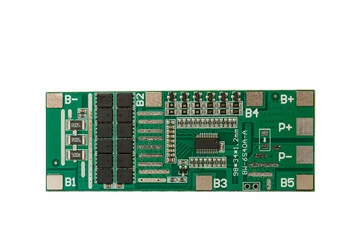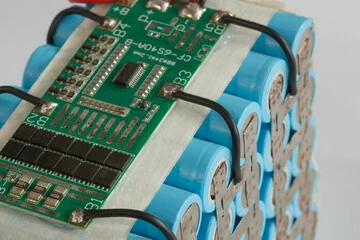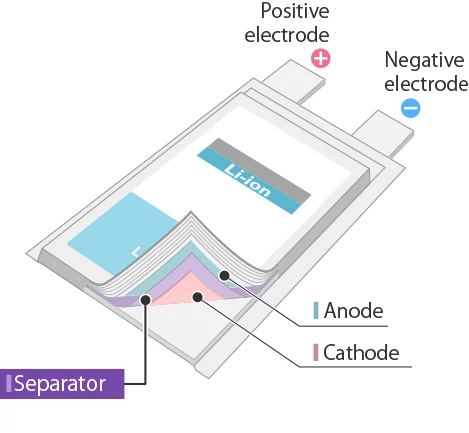Material selection for protective enclosures
main content
As a core component of the power system, the protective casing of the starting lithium battery of a motorcycle not only needs to withstand mechanical shock and vibration under complex road conditions, but also has to deal with environmental challenges such as extreme temperatures and corrosive media. The choice of shell material directly affects the safety, lifespan of the battery and the energy density of the entire vehicle. The current mainstream materials are mainly plastic and metal (aluminum alloy/steel), which show significant differences in mechanical properties, thermal management, cost control and other aspects.
Plastic casing: A balance between lightweight and corrosion resistance
1. Material properties and advantages
The plastic casing mainly adopts ABS engineering plastic or polycarbonate (PC), and has the following core characteristics:
Lightweight: With a density of only 1.1-1.4g/cm³ (approximately 40% of that of aluminum alloy), it can significantly reduce the overall vehicle weight and enhance the energy density ratio.
Corrosion resistance: It has better resistance to corrosive media such as acid rain and salt spray than metals, and is especially suitable for use in coastal or high-humidity areas.
Design flexibility: The injection molding process can produce complex curved surface structures, adapting to the layout requirements of irregular-shaped batteries, such as integrating heat dissipation fins or shock-absorbing buffer grooves.
2. Technical Challenges and Optimization
Mechanical strength limitation: The tensile strength of ABS plastic is 40-50 mpa, which is much lower than the 200-400 mpa of aluminum alloy. Its impact resistance needs to be enhanced by glass fiber reinforcement (adding 20%-30% glass fiber).
Thermal management bottleneck: The thermal conductivity of plastic is only 0.2-0.3W/(m·K), which easily leads to heat accumulation inside the battery pack.
The solutions include:
① Embed a graphene thermal conductive layer (increase the thermal conductivity to 5-8W/(m·K));
② The micro-pore foaming process is adopted to increase the convective heat dissipation area.
Metal Casing: The ultimate pursuit of high strength and thermal management
1. Technological breakthrough in aluminum alloy shells
Aluminum alloys (such as 6061-T6) have become the mainstream choice due to their strength-to-weight ratio (tensile strength 310MPa, density 2.7g/cm³) :
Structural protection: It can withstand a 15G instantaneous impact load, effectively preventing electrode sheet breakage or electrolyte leakage.
High-efficiency heat dissipation: The thermal conductivity is 160-180W/(m·K), and the temperature difference is controlled within ±2℃ through the serpentine flow channel design, avoiding the risk of thermal runaway.
Electromagnetic shielding: The metal casing can attenuate electromagnetic interference by more than 30dB, ensuring the stability of the BMS signal.
2. The Return and Innovation of steel shells
Although the steel shell is relatively heavy (with a density of 7.8g/cm³), nickel-plated steel and stainless steel (such as 304L) show advantages in specific scenarios:
Extreme protection requirements: The battery pack of the off-road motorcycle adopts a 1.2mm thick stainless steel casing with a compressive strength of up to 500MPa, which can withstand rock impacts.
Cost control: The production cost of steel shells is 30% lower than that of aluminum alloys, making it suitable for cost-performance scenarios such as commercial heavy-duty electric tricycles.
Technological upgrade direction:
Composite coating technology: The surface is sprayed with a ceramic-polymer composite coating (50μm thick), which increases the corrosion resistance and service life by three times.
Topological optimization design: Achieve hollowed-out weight reduction (with a weight reduction rate of 25%) through finite element analysis (FEA) while maintaining structural integrity.
Future Development Trends
The composite material revolution: The carbon fiber reinforced plastic (CFRP) shell has achieved a tensile strength of 600MPa and a density of 1.6g/cm³, and is about to be applied to competition-level electric motorcycles.
Intelligent perception housing: Embedded with optical fiber sensors and shape memory alloy (SMA), it monitors deformation in real time and autonomously repairs microcracks.
Detachable and modular: The new battery act of the European Union promotes standardized interface design for steel shells, enabling users to quickly replace batteries.
Conclusion
The material selection for the lithium battery casing of a motorcycle starter is essentially a multi-objective optimization issue among lightweighting, strength and cost. Plastic casings are breaking through the strength bottleneck through material modification, while metal casings continue to dominate the high-performance market with their thermal management advantages. With the integration of composite materials and intelligent sensing technology, the future shell will transcend its inherent role as a "passive protection" and evolve into an intelligent carrier that integrates structural support, thermal regulation, and condition monitoring, setting a new benchmark for the safety and energy efficiency ratio of electric motorcycles.

START-STOP LITHIUM battery
Enov start-stop battery is designed to provide excellent performance for high-demand start-stop vaehicles. It adopts the third-generation intelligent lithium platform architecture to achieve technological breakthroughs in core indicators such as cycle life, environmental adaptability and energy density. Compared with the traditional lead-acid battery system, the energy efficiency is increased by 210%, the cycle life is extended by 8-10 times, and the monthly self-discharge rate is controlled within 3%. Enov's unique low-temperature battery technology makes a breakthrough in achieving stable output in the whole climate domain from -30℃ to 65℃, maintaining more than 90% of the effective capacity release under extremely cold conditions (-30℃), and maintaining 90% of the capacity in high temperature environments (65℃).
The start-stop battery series products cover the mainstream voltage platform of 12V/24V/48V, and support flexible configuration of LFP (lithium iron phosphate) and NCM (lithium nickel cobalt manganese oxide) dual-material system. All models adopt modular design to support customization of different model specifications. Enuo engineering and technical team to provide full cycle technical service support, if you need, please contact us.
Other products
UAV BATTERY
LITHIUM ENERGY STORAGE BATTERY
QUICK INQUIRY
FAQ
Access to high frequency technical questions with one click, get accurate answers on product application, after-sales policy and customization process.
Service and Support
Get the latest product specifications, explore professional OEM/ODM customization services, click to open exclusive technical support and production solutions.
Become a Partner
We sincerely invite resources to interconnect, work together for win-win development, and immediately open a new chapter of strategic cooperation!




